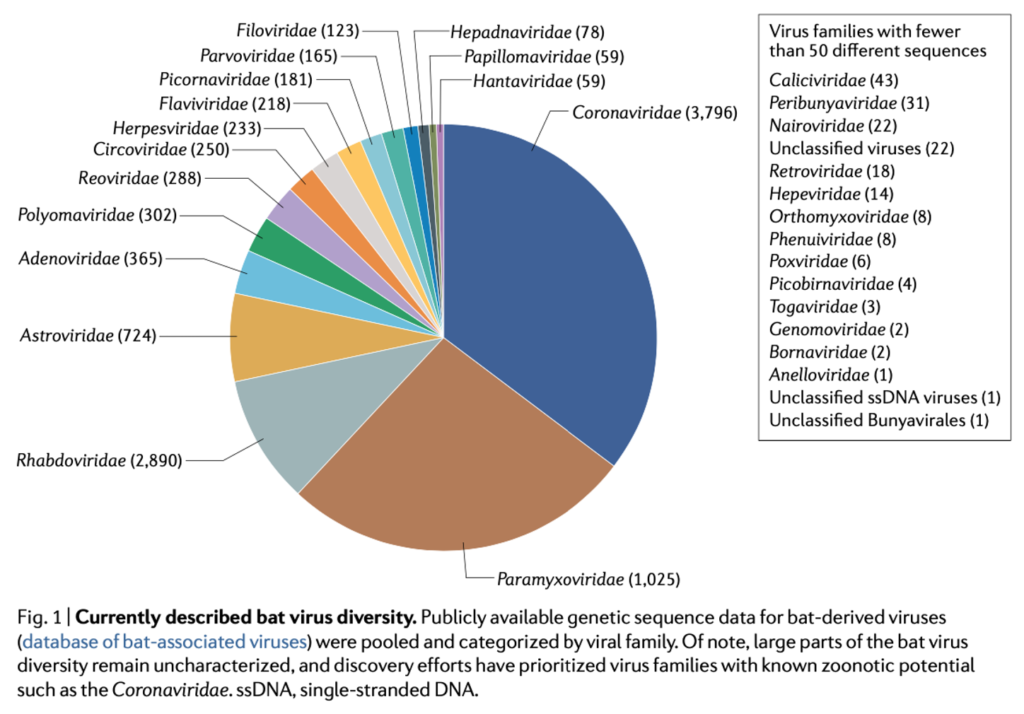
Most infectious zoonotic viruses that are prone to spread recently have originated in bats. Why is this? What makes bats the perfect reservoir host? You can find bats on six of the seven continents, and the species comprises 22% of all mammals on the globe, making them the second most diverse species of mammals.
Viruses found in bats were first identified in the 1930s, where Joseph Pawan first discovered that a bat carried the rabies virus. Today, there are thousands of virus species found in bats. The virus species found come from 28 viral families, yet most do not have zoonotic potential. This, however, can be underestimated as not all bats are closely surveilled, and new viruses are continually being discovered.

Though it can be difficult to estimate when a bat sheds a virus on another host, shedding of viruses occurs all the time. Often, shedding events culminate with and lead to a spillover event into another species. Many things need to align for a virus to follow an infect-shed-spill-spread cascade effectively.
Bats fly, which expends a lot of energy and causes high body temperatures. These raised temperatures can benefit viral pathogenesis and allow for more successful infection. Although bats experience many viral infections, they seem to be tolerant to many, unlike humans. Spillover of viruses from bats to humans involves certain events to align. There must be contact between the bats carrying disease and the human, molecular and cell compatibility for the virus and host, and lastly, a faulty immune response. The spillover can occur directly from the bat reservoir to humans or indirectly through an intermediate host.

References
Letko, M., Seifert, S. N., Olival, K. J., Plowright, R. K., & Munster, V. J. (2020). Bat-borne virus diversity, spillover and emergence. Nature Reviews Microbiology, 18(8), 461-471.
